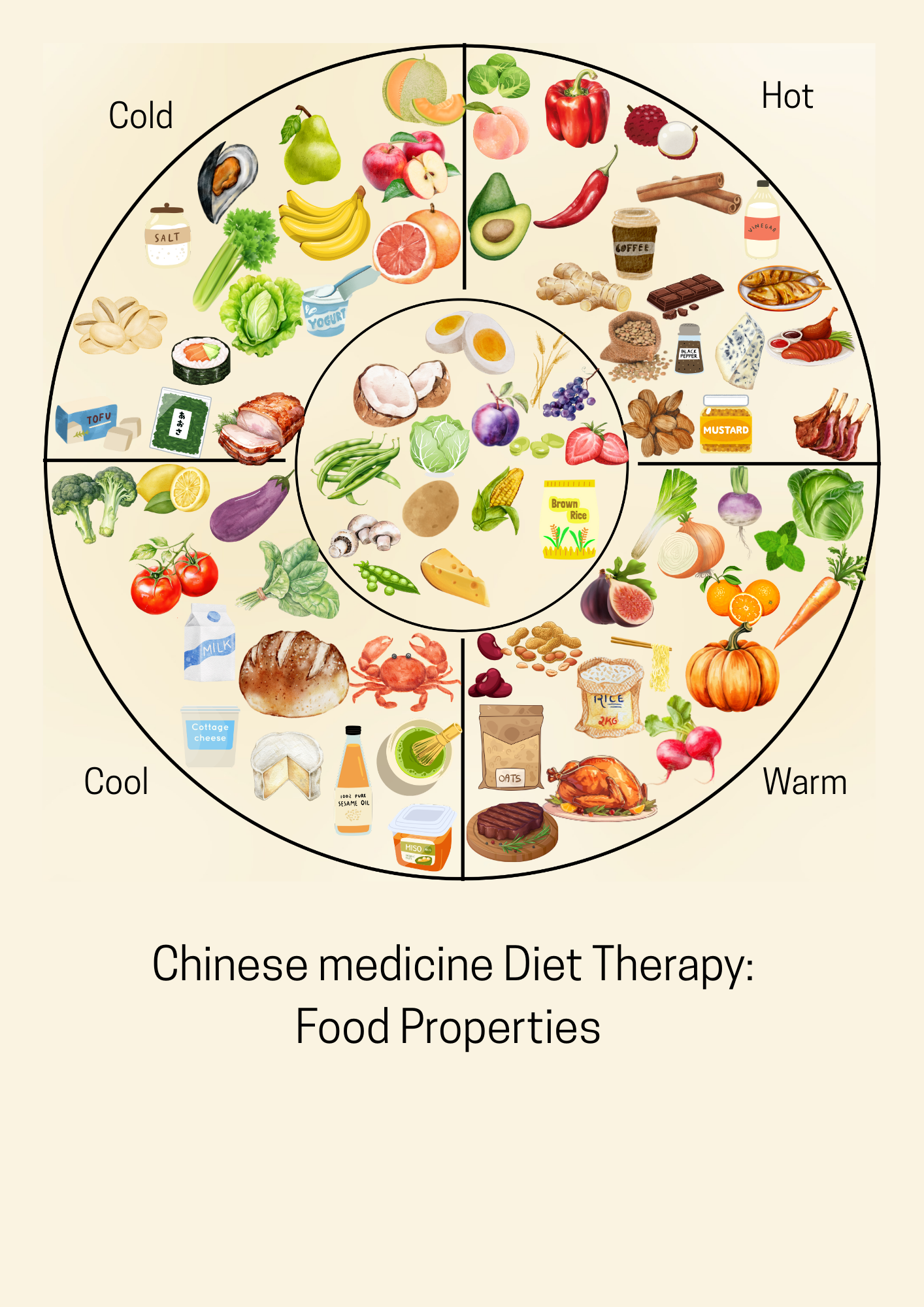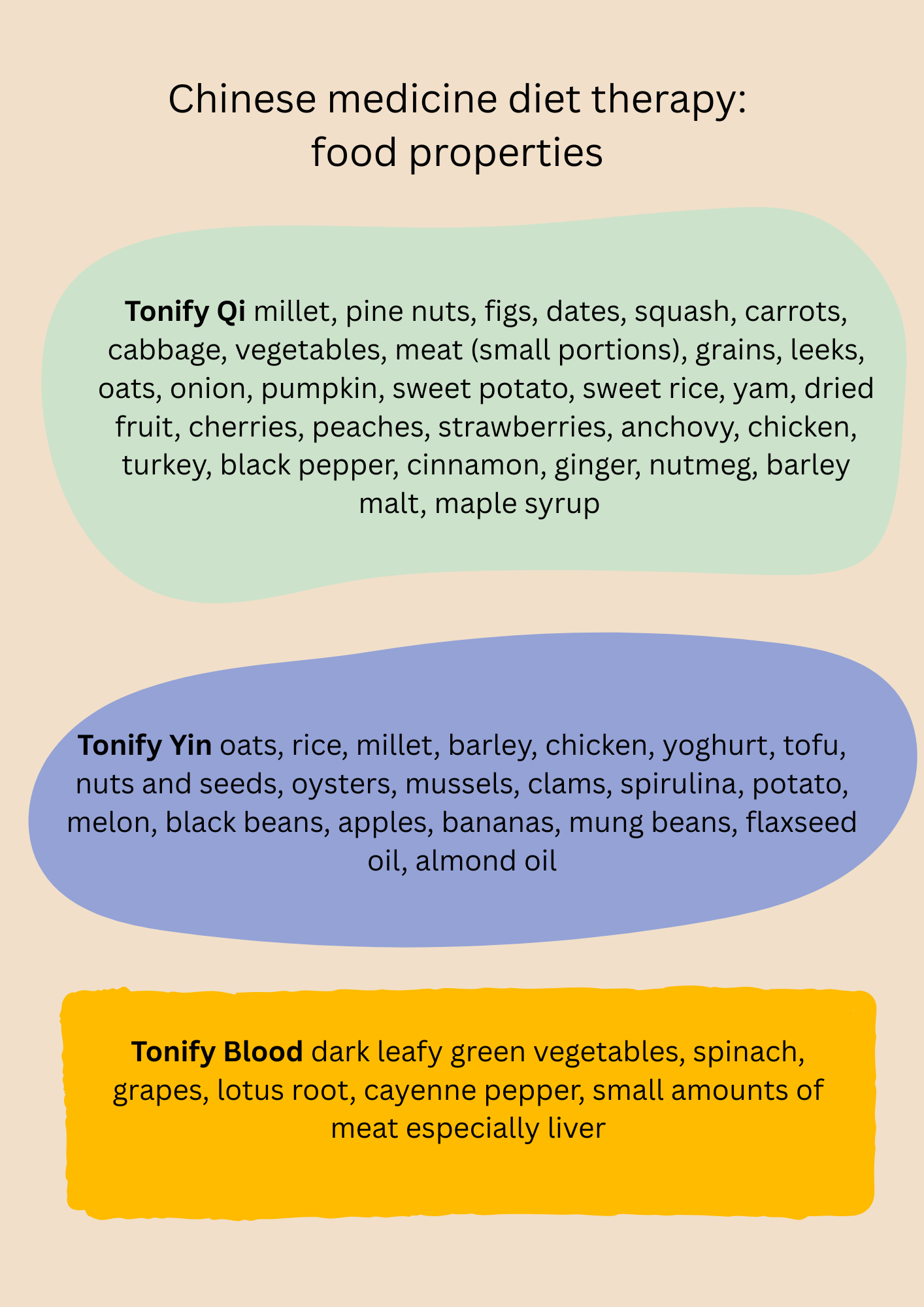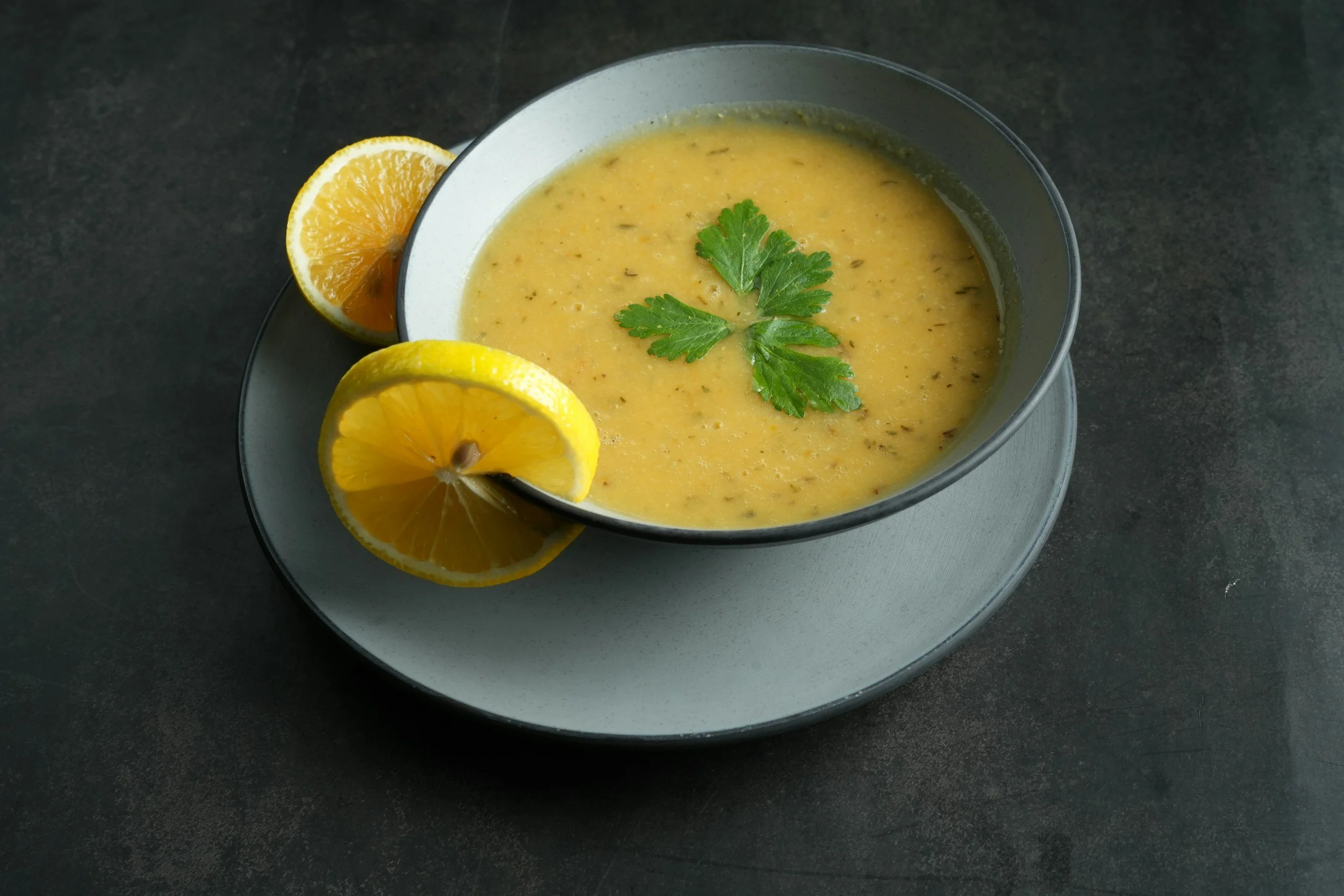Chinese medicine diet therapy
Diet therapy is an important component of Chinese medicine and is included in most Chinese medicine consults. You can think of it like nutrition but guided by Chinese medicine principles. These principles include descriptions of the nature and properties of different foods that go beyond their simple nutritional value. Foods will be classified in terms of their temperature, and this doesn’t just mean whether it feels hot or cold, but whether the property of the food is warm or cool, it’s direction – whether it tonifies Yin, Yang, Qi or blood , and, if it enters any particular meridian.
In Chinese medicine each person has a unique constitution, and each constitution will require the input of foods of different properties. For example, somebody who is predominantly hot in nature, who might be prone to diseases of inflammation such as IBS or joint inflammation will need to avoid too many hot foods. In contrast, a person with a cold constitution,who might have really cold hands and feet, get aching joints in the cold or suffer from painful periods that are relieved with a hot water bottle, will need to include more warm and hot foods in their diet, and avoid cold property foods. Chiense medicine consults with me often involve a constitutional diagnosis and within this patients will receive information on the types of eating that is best for them. Eating well for your constitution aids in best digestion, ensuring that the food you are eating nourishes the aspects of your body that need it most. It also prevents damage occurring to your digestion and which can impact other key areas of your health.
While Chinese medicine diet principles are generally unique to each person, there are some key things that can be applied to (almost) everyone. They are:
- Eating food that is warm and well cooked
- Avoiding raw and cold foods as these damage the digestive organs
- Avoids fried, greasy and overly (processed) sweet food
- Eating small meals regularly rather than fasting and then having large meals
- Eating mindfully – not working, standing or waking while eating
- Avoiding too much hot or spicy food including coffee and chilli
So what are the food properties?
These two charts look at two aspects of Chinese medicine food properties. The first explores the temperature of different foods and the second examines the direction of these foods.
Foods can be selected based on temperature to suit the individuals body.
Foods of different properties can be selected to nourish aspects of the body that need it.
Putting together a meal:
Once you understand your unique constitution and the properties of individual foods you can use these concepts to put together meals and snacks that suit your body. The components of your meal will be chosen based on the individual properties of the foods and the overall properties of your meal will balance these properties based on your unique constitution.
For example here is how I would put together a meal based on constitution if the five ingredients available to make a meal are: meat, lentils, rice, vegetables and spices -
Cold type constitution:
Use a bigger portion of lentils
Use big portions of spices, including ginger, nutmeg, turmeric, cumin
Use a small portion of chilli
Use beef as the meat as it is warm in nature
No salt as it is too cold in temperature
Vegetables used should be predominantly warm or hot such as capsicum, pumpkin, leek and onion
Use white rice as it is warm in property
Hot type constitution:
Use less lentils as they are hot in nature
Use pork as the meat as it is cold in temperature
Use mall amount of mild spices such as cumin or turmeric
Use a small amount of salt
No chilli
Vegetables used should be predominantly cool or cold such as eggplant, broccoli or tomato, potato
Use brown rice as it is neutral in property
Depending on the Chinese medicine diagnosis it may also be recommended that the patient include foods to nourish an aspect of their body, for example, Yin, Qi or Blood. In this case they can choose a few foods off the above list to add into the meal.
The key to Chinese medicine diet therapy is that your meal should include all of the flavours and colours, and can include foods of any temperature or direction. You should however ensure that the overall property of your food suits your constitution. Therefore, if you are cold in constitution, the majority of foods in your meal should be warm or hot in nature. Check out my Instagram as this week I will be breaking down different meals and snacks I usually have into their properties and discussing how I can change them based on constitution!
If you are interested in using Chinese Medicine diet therapy to enhance your wellbeing I’d love to walk you through it. Come and see me in clinic today for constitutional diagnosis and dietary advice in line with Chinese medicine principles!




